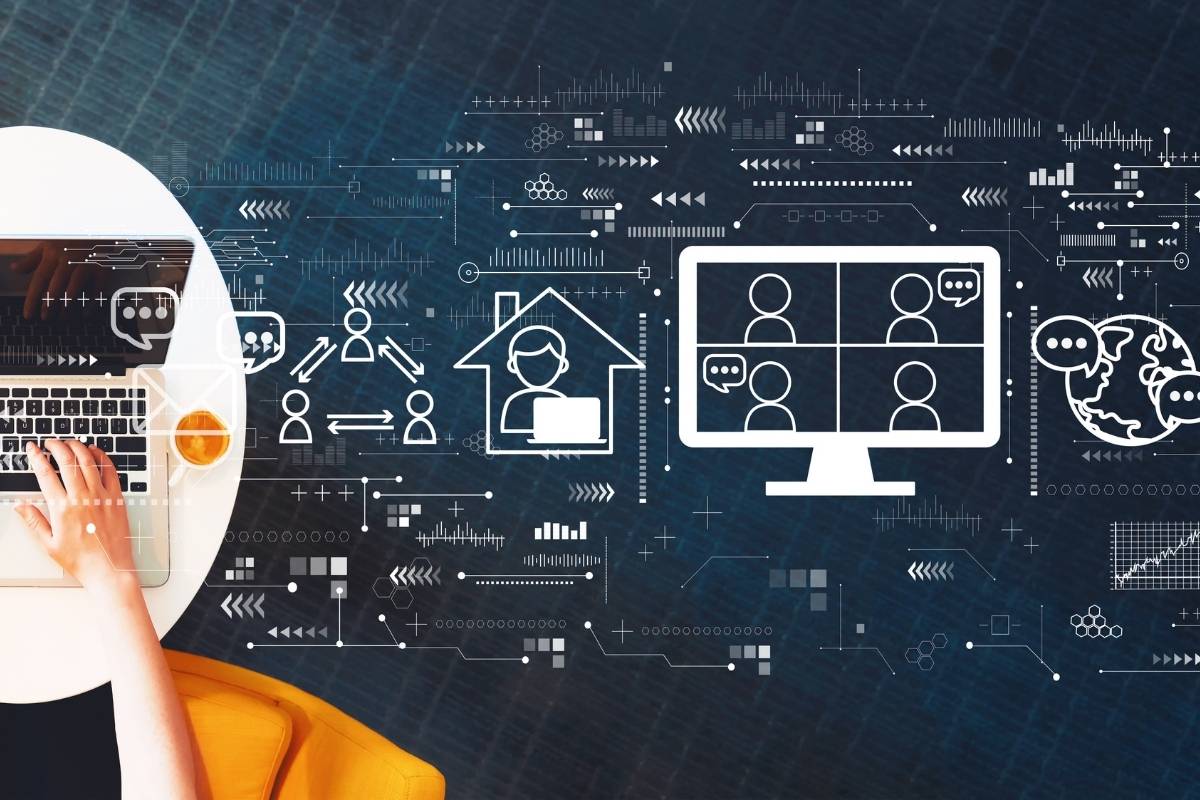Imagine being able to ‘score’ a meeting based on attendees’ body language and facial expressions? Well, Microsoft is making this concept a reality and filed a patent application for an “insight computer system” that can score meetings based on body language, facial expressions, the number of attendees, and ambient conditions like the time of day and temperature. To better understand how this technology will shape the future of communication, it is essential to identify what is missing from the current virtual layout and immediate concerns.
What is Missing from Virtual Meetings?
Nodding when a colleague speaks, smiling, and looking into the webcam when someone addresses you are ways to practice engaging body language in a virtual meeting. But after the third, fourth, or fifth call of the day, it can be challenging to keep the enthusiasm. Motivation, engagement, and interest are essential characteristics of a virtual meeting.
Many people are working from home for the first time, and ‘virtual burnout‘ is real and alive, causing miscommunications and ineffective collaboration. Don Shortslef, a senior practitioner for Duke University Learning and Organization Development, states that “it is important to pay attention to body language in virtual meetings. It is important because facial expressions, hand gestures, and posture can help you communicate and collaborate effectively, demonstrate responsiveness, and reinforce trust.” The ability to read attendees’ physical cues is a missing piece to successful work from home environments.
Understanding Microsoft’s Meeting Insight System
Using as many tools as possible to facilitate successful virtual meetings is crucial in creating thriving teams during the global pandemic. This notion is just one reason why Microsoft developed the Meeting Insight System. The feature was introduced last year but rose to fame only after a demonstration at a corporate event.
The meeting observation tools allow team leaders to observe employees’ body language and facial expressions during work meetings and give the events a “quality score.” Microsoft’s patent filing from July 30, 2020, suggests that it could be used in real-world meetings or online virtual get-togethers.
Calculating a Productivity Score
Microsoft leverages the Internet of Things (IoT) devices and sensors to record and report data regarding the local environment, whether real-life or virtual. These sensors can record things like which invitees attend a meeting, attendees’ body language and facial expressions, the amount of time each person spent contributing to the discussion, and speech patterns consistent with boredom or fatigue.
The meeting insight system’s creators suggest employees’ mobile devices could be used to monitor if they are simultaneously engaged in other tasks such as texting or navigating other internet tabs. The platform could also check the attendees’ schedules to consider whether they had multiple meetings that day. All the collected information combined with other factors, such as meeting efficiency, emotional sentiments expressed, and the comfort of the environment, create an overall quality score to rank the meeting.
New Tech and New Concerns
Microsoft is already dogging fire over a separate ‘productivity tool,’ and this one faces similar discourse. Many people deem the meeting insight computing system as an ’employee surveillance tool.’ Not only does it monitor the physical behaviors of employees during meetings, but it enables team leaders to keep track of individual workers’ use of Microsoft’s Office 365 software, which includes Outlook, Teams, and Excel applications.
The patent suggests that this new technology could identify information technology problems on the horizon that would make meetings ineffective. Still, privacy campaigners argue it is a huge step back for workers’ rights.
Shaping the Future of Communication
Microsoft representatives said that they apply for “many patents” in order to protect their engineers’ work. Still, applying for a patent does not necessarily indicate that the technology described will be used as a product. This conundrum highlights artificial intelligence’s role within the workplace and poses the question, “How can we leverage innovation without compromising the safety and security of the workforce?”
The case of the meeting insight computing system is just one example of how technology leaders are trying to answer this question. Technology plays a pivotal role in supporting humanity through challenging and unprecedented times. It has been vital in keeping communication lines open and businesses operating during the COVID-19 global health. Innovation will continue but knowing where the line between innovative and invasive stands is of utmost importance.





